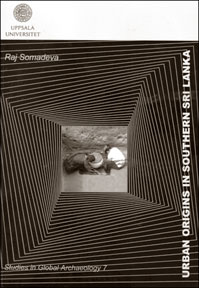
Somadeva, R., 2006. Urban Origins in Southern Sri Lanka. Studies in Global Archaeology 3. Uppsala, Department of Archaeology and Ancient History, 436 pp., 9 diagrams, 18 maps, 122 figures, 130 plates, 201 tables, 9 appendices. ISSN 1651-1255, ISBN XXXX.
This study focuses upon the development of urbanization in southern Sri Lanka during the proto, early, and late historical periods c. 900 BC onwards. The following research themes are addressed:
(a) Why did the southern semi-arid zone become a focus of urbanism?
(b) What were the morphological, spatial, and chronological parameters of these developments?
(c) How did demography, resource availability, trade, craft specialization, political organization, and ideology influence the process of urbanization in this area?
An initial Land Unit classification using satellite imagery was conducted to provide a context for investigating socio-environmental relationships. The existing cultural landscape was mapped using systematic archaeological field surveys focussed on visible remains such as architectural features, ceramics, and small finds. A time-series archaeological site data set was established and the distribution of sites was compared to other parts of Sri Lanka using GIS (Geographical Information Systems). Coring and excavation of a series of trenches were used to establish the stratigraphic sequence to document the range of variation of finds and obtain samples for dating.
This study confirms the Dipavamsa and Mahavamsa historical chronicles compiled c.400-500 A.D in showing that the southern semi-arid zones of Sri Lanka have maintained a distinct socio-political character throughout Sri Lankan history. It also provides a point of reference for understanding Sri Lankan contributions to trade and urbanism in the wider Indian Ocean region.
Keywords: Archaeology, Sri Lanka, Kirindi Oya, urbanism, ceramics, beads, historical archaeology, settlement archaeology, inscriptions, Land Unit classification, satellite image.



Interesting